
Focus on taking care of kumquat trees for Tet
At this time, kumquat growers in Thanh Ha commune are entering the peak period, which determines the quality of the finished product. Therefore, from early morning, the sound of pruning shears and calls to each other in the kumquat garden resounded bustlingly. Some people were bending branches, others were counting young shoots, some were re-potting, others were covering the roots… Each step required meticulousness and patience.
Mr. Nguyen Van Thanh in hamlet 6, Lai Xa 2 village said that for kumquat growers, there is not much time left until Tet, so he and his wife work almost non-stop. The family grows more than 1,000 kumquat pots that are in the fruiting season, along with about 800 trees planted in the ground. "Since the beginning of December, customers from all over have come to order, so now we have to take good care of each tree. In about a month, the kumquats will gradually ripen, and then customers who come to see the garden will be very happy," Mr. Thanh shared.
Every year, Mr. Nguyen Van Nguyen's family grows more than 500 kumquat trees to serve the Tet market. Thanks to proper care, his kumquat garden is always full of fruit and has lush green leaves. Mr. Nguyen said: "Every year, around the beginning of December, customers come to order trees, but this year many people have come to choose and order. Perhaps after the epidemic and erratic weather, everyone wants to prepare early to have beautiful trees to play with during Tet."
Thanh Ha commune has a riverside alluvial land that is silted up every year, very suitable for growing kumquat trees. Currently, the whole commune has more than a dozen households doing this job. Of which, the smallest household grows about 200 trees, the largest household grows up to 2,000 trees. In addition to serving local people during Tet, Thanh Ha kumquat trees are also exported to many neighboring provinces and cities. Every year, Mr. Nguyen Van Binh in Ha Dong commune comes to buy kumquat trees in Thanh Ha commune to enjoy Tet and as gifts.
According to Mr. Binh, Thanh Ha kumquats are smaller than those grown in Hung Yen or Ha Nam (formerly Nam Dinh ), but have the advantage of being durable, slow to wilt, and keeping their beautiful shape throughout the spring. The average selling price is from 150,000 to 1.2 million VND per tree, depending on size and shape. This price is quite suitable for the income of many families, so it is highly appreciated.
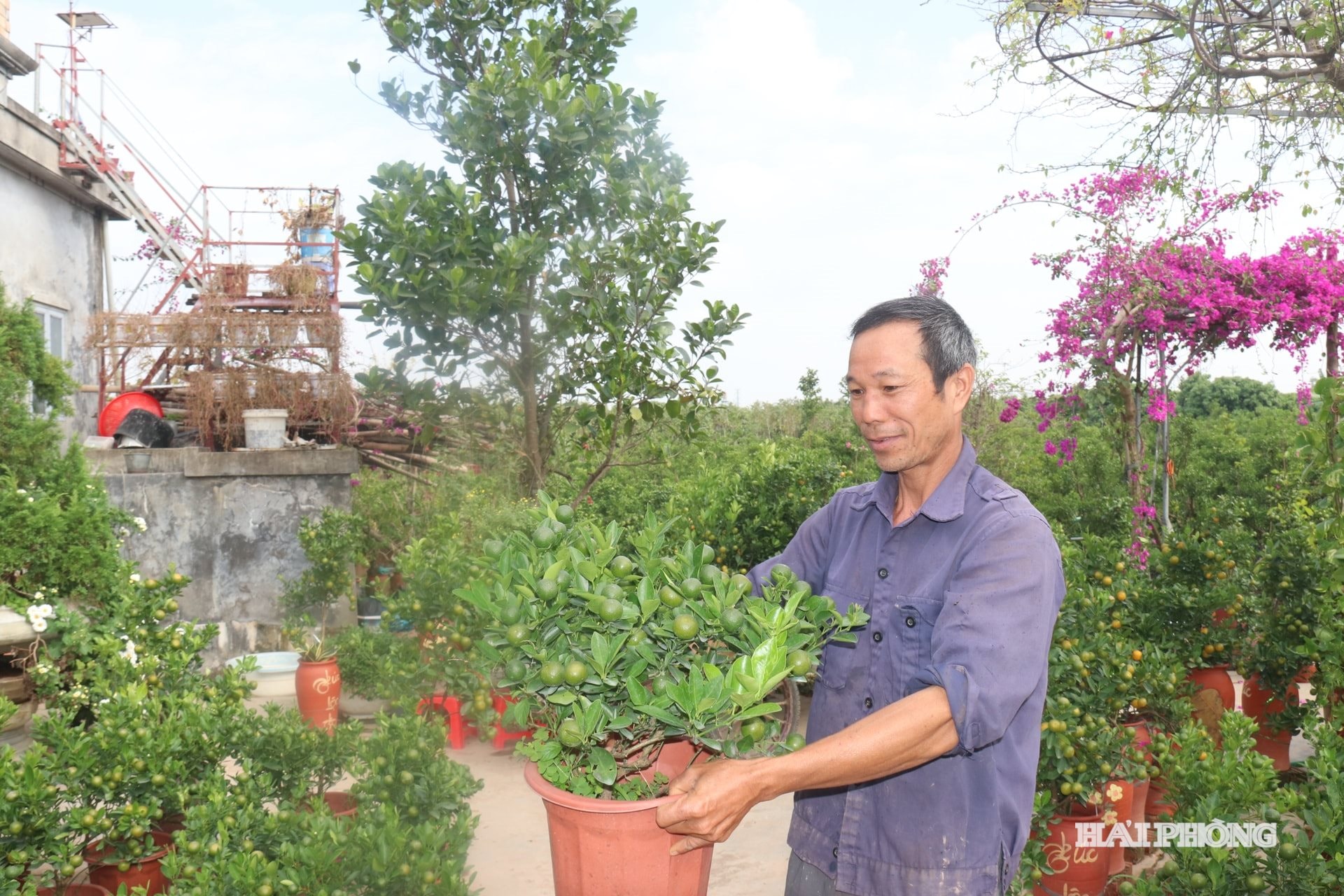
Building the brand "Thanh Ha kumquat"
In the past, Thanh Ha kumquat growers often focused on large kumquat trees planted in the ground, creating elaborate shapes. In recent years, the market has favored bonsai kumquats and mini kumquats grown in small pots, suitable for urban spaces. Grasping this trend, many households in Thanh Ha commune have converted, invested in ceramic pots, soil and learned how to create artistic bonsai shapes. This flexibility helps people reduce transportation costs, making it easier to sell, especially when the weather and market have fluctuated in recent years.
Growing kumquat trees is not only a hard job, but also requires meticulousness, knowledge and many years of experience. Every year, thanks to the kumquat growing profession, Mr. Nguyen Van Thanh's family earns a profit of 500 - 700 million VND, becoming one of the households with high income in the locality. However, he also admits that this profession is facing many pressures as input costs, fertilizer prices, pots and pesticides all increase. Meanwhile, erratic weather forces growers to invest more effort to keep the trees healthy and the fruit beautiful.
Mr. Thanh said that storm No. 3 in September 2024 caused heavy damage to many agricultural areas in the commune. Thanks to his experience, he promptly bought bamboo mats to surround each kumquat tree and lowered the bonsai pots to avoid breakage. “Thanks to the preparation, my kumquat garden was not damaged much and still produced high yields,” Mr. Thanh said.
According to Ms. Nguyen Thi Thuy, Vice Chairwoman of Thanh Ha Commune People's Committee, in order for kumquat growing in the locality to develop sustainably, people need to carefully calculate the risks of natural disasters, markets and consumption methods. Because currently, kumquat consumption is mainly in the traditional way, customers come to the garden to choose trees or traders buy and transport them elsewhere. Meanwhile, new sales channels such as e-commerce, social networks, and online agricultural product platforms have not been effectively exploited. Building the brand "Thanh Ha kumquat" is also of interest to the government and people. When there is a brand, the product is not only easily recognizable, but also helps keep prices stable, limiting the situation of being forced to lower prices during peak season.
“We are planning to organize training courses to help farmers learn how to sell on multiple channels, take photos, promote products online, and connect with businesses to purchase and sell at spring fairs to expand output,” said Ms. Thuy.
Growing kumquat trees in Thanh Ha not only brings income but also preserves the cultural beauty and hobby of growing ornamental plants during Tet. For farmers, each kumquat tree is a work of art from their hard work and love. Despite facing many challenges, they still hope that with diligence, flexibility and support from the government, Thanh Ha's "golden trees" will continue to shine everywhere, bringing Tet joy and a stable income to growers.
NGOC THANHSource: https://baohaiphong.vn/nguoi-trong-quat-canh-thanh-ha-tat-bat-chuan-bi-cho-mua-tet-526515.html


![[Photo] Unique architecture of the deepest metro station in France](https://vphoto.vietnam.vn/thumb/1200x675/vietnam/resource/IMAGE/2025/11/14/1763107592365_ga-sau-nhat-nuoc-phap-duy-1-6403-jpg.webp)


![[Photo] Unique art of painting Tuong masks](https://vphoto.vietnam.vn/thumb/1200x675/vietnam/resource/IMAGE/2025/11/14/1763094089301_ndo_br_1-jpg.webp)









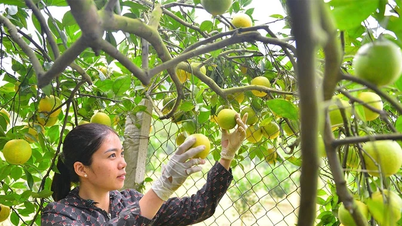

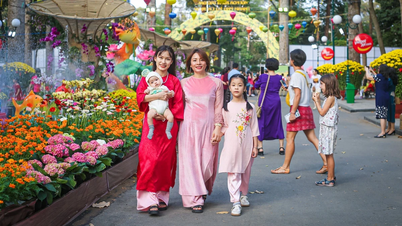


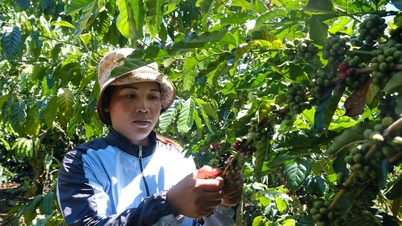
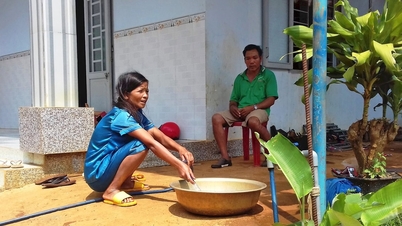














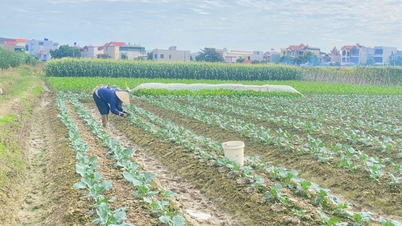

![[Photo] Special class in Tra Linh](https://vphoto.vietnam.vn/thumb/1200x675/vietnam/resource/IMAGE/2025/11/14/1763078485441_ndo_br_lop-hoc-7-jpg.webp)






































































Comment (0)